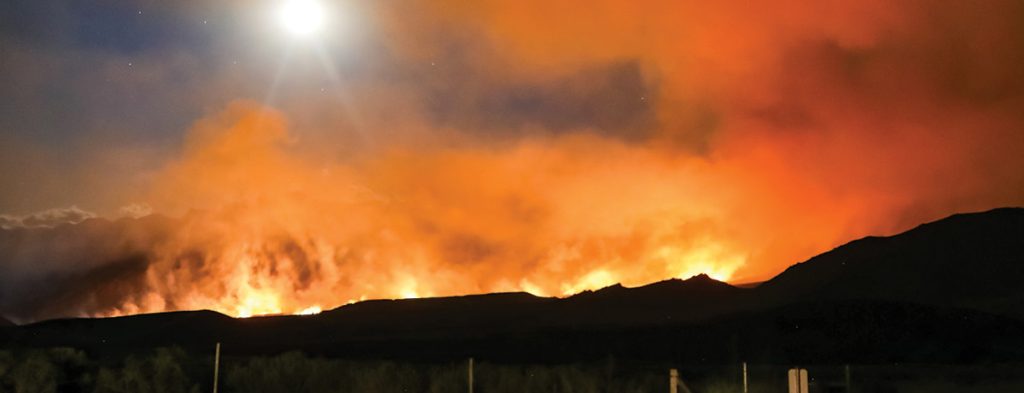California is no stranger to devastating wildfires. A combination of prolonged droughts (which can last for years), rising temperatures, and an ageing infrastructure puts California at increased risk. In addition to the psychological and physical costs, these catastrophes give rise to a complex network of court cases known as “wildfire litigation.”
Wildfire lawsuits are legal actions that result from the destruction caused by fires, particularly when negligence is suspected, as well as equipment failures or poor land management practices. California is home to a field of law that is particularly complex due to state-specific doctrines, including inverse condemnation. Business, municipal officials, insurers, and companies need to have a clear understanding of environmental and legal issues when defending or pursuing wildfire claims.
Comprehending California’s Legal Framework
California has a complex legal system due to the numerous laws and court precedents that affect how damages and liability are determined. Inverse condemnation, a legal doctrine with a significant impact on wildfire litigation throughout the state, is one of its most important aspects. Under this doctrine, even if PG&E followed safety regulations or was found not negligent, the public utility can still be held liable if its equipment caused fire damage.
This legal precedent led to billions of dollars in liability suits, forcing some utilities into bankruptcy and resulting in massive settlements with fire victims. The inverse condemnation principle is designed to ensure that the costs associated with public improvements that cause damage will be borne not by individuals but by the general public.
California’s comparative liability rules apply to multiple parties. These include utilities, government departments, landowners, and even contractors. They can all be held liable based on their involvement in causing the wildfire or their failure to fulfill their role.
Wildfire Litigation Cases
California wildfire cases can be categorized into three main categories. Each type is different in terms such as scope, the number of plaintiffs involved, and previous legal precedents.
- Utility Company Legal Cases
Utility companies are often involved in wildfire litigation due to the connection between power lines and ignition sources. Plaintiffs typically claim that utilities failed to maintain equipment, de-energize wires during high-risk conditions, or neglect vegetation management. Legal strategies involve:
- Establishing a clear causal chain, from equipment to fire ignition.
- Highlighting non-compliance with the state fire prevention standard.
- Take advantage of public reports or testimonies from whistleblowers.
Defense strategies can focus on demonstrating regulatory conformity, claiming environmental factors as the true cause, or challenging the application’s inverse condemnation.
- Government Entity Court Cases
Municipalities, counties, and other entities affected by fires will sometimes file claims to recover expenses for environmental rehabilitation, infrastructure damage, or emergency response. Los Angeles County, as an example, has been actively pursuing legal action against Southern California Edison regarding several major fires.
- Class Action Suits
In many cases of wildfire, class-action suits are filed on behalf of affected homeowners and renters, as well as business owners and insurance companies. These suits consolidate individual claims from thousands of people, streamlining litigation. They also allow for collective bargaining and larger settlements.
- Insurance Claims Subrogation
Insurance companies that have paid out claims to their policyholders can pursue subrogation against the parties responsible to recoup any losses. These cases often occur in conjunction with or in parallel to class actions and utility negligence cases.
Case Studies
Examining wildfire lawsuits may teach you more about how legal tactics are used in real-world situations. They highlight patterns and key victories in this field.
- North Bay Fires (2017): During the North Bay Fires of 2017, SHK Law represented the victims. The fires devastated Napa and Sonoma Counties. The firm successfully secured substantial compensation for the families and individuals affected by Pacific Gas & Electric. This case demonstrated the value of expert witnesses and detailed fire analysis in establishing fault.
- Woolsey Fire-2018: Southern California Edison allegedly caused the Woolsey Fire. This fire destroyed over 1600 structures. SHK Law and other legal teams negotiated substantial settlements — more than $2.2 billion — illustrating the scale and seriousness of utility liability.
- Camp Fire (2017): Arguably California’s deadliest, most destructive fire ever, the Camp Fire caused PG&E to plead guilty on multiple counts. SHK Law’s involvement ensured that victims would be compensated under the Fire Victim Trust. A mechanism created during PG&E’s bankruptcy to pay out claims.
Explore wildfire litigation in California using these case findings to learn about not just legal responsibility but also the significant contribution attorneys make to helping people recover and start anew.
Conclusion
California wildfire lawsuits continue to change, shaped as they are by environmental changes, regulatory shifts, high-stakes litigation strategies, and other factors. Whether it’s through subrogation, class actions, or government lawsuits, these legal efforts play a vital role in ensuring accountability.
The threat of fires is increasing due to climate change, aging infrastructure, and other factors. This means that both public and privately owned entities must remain vigilant. Understanding wildfire law is essential to both legal professionals and victims alike. This will help them secure justice, improve safety, and promote a more resilient society.




